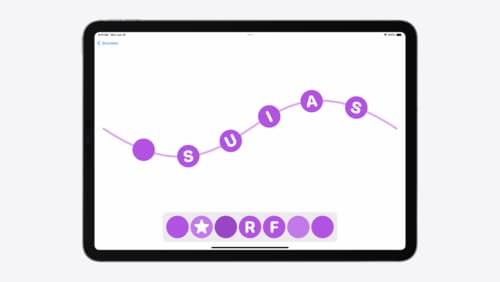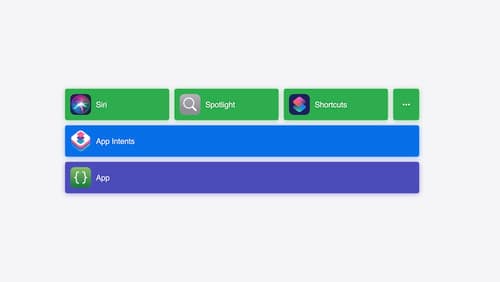how to start a view in swiftui
Asked on 2024-07-31
1 search
To start a view in SwiftUI, you can follow the basic structure as outlined in the "SwiftUI essentials" session. Here are the key points:
-
Views as Building Blocks: Views are the fundamental building blocks of user interfaces in SwiftUI. Every pixel on the screen is defined by a view.
-
Declarative Syntax: SwiftUI uses a declarative syntax where you describe what you want in your user interface, and SwiftUI takes care of rendering it. For example, you can create text, images, and controls like buttons.
-
Basic Example: Here is a simple example to get you started:
import SwiftUI struct ContentView: View { var body: some View { VStack { Text("Hello, World!") .font(.largeTitle) .padding() Button(action: { print("Button tapped!") }) { Text("Tap me") } } } } struct ContentView_Previews: PreviewProvider { static var previews: some View { ContentView() } } -
State-Driven Views: SwiftUI views are state-driven. When your view's state changes, SwiftUI automatically updates the UI. For example, you can use
@Stateto manage state within a view.import SwiftUI struct ContentView: View { @State private var isTapped = false var body: some View { VStack { Text(isTapped ? "Tapped!" : "Hello, World!") .font(.largeTitle) .padding() Button(action: { isTapped.toggle() }) { Text("Tap me") } } } } struct ContentView_Previews: PreviewProvider { static var previews: some View { ContentView() } }
For more detailed information, you can refer to the "SwiftUI essentials" session from WWDC 2024. Here are some relevant chapters:
These chapters will provide you with a comprehensive understanding of how to start and build views in SwiftUI.

Migrate your TVML app to SwiftUI
SwiftUI helps you build great apps on all Apple platforms and is the preferred toolkit for bringing your content into the living room with tvOS 18. Learn how to use SwiftUI to create familiar layouts and controls from TVMLKit, and get tips and best practices.

Enhance your UI animations and transitions
Explore how to adopt the zoom transition in navigation and presentations to increase the sense of continuity in your app, and learn how to animate UIKit views with SwiftUI animations to make it easier to build animations that feel continuous.

Bring your app’s core features to users with App Intents
Learn the principles of the App Intents framework, like intents, entities, and queries, and how you can harness them to expose your app’s most important functionality right where people need it most. Find out how to build deep integration between your app and the many system features built on top of App Intents, including Siri, controls and widgets, Apple Pencil, Shortcuts, the Action button, and more. Get tips on how to build your App Intents integrations efficiently to create the best experiences in every surface while still sharing code and core functionality.
